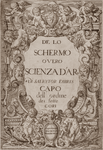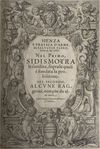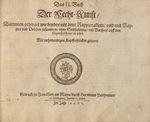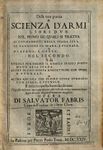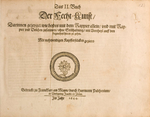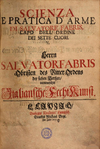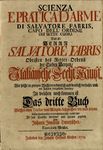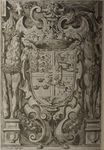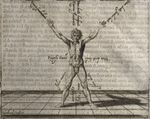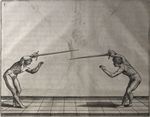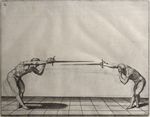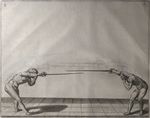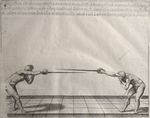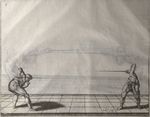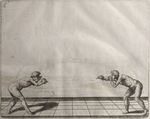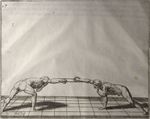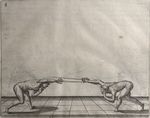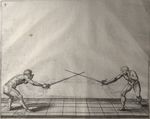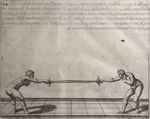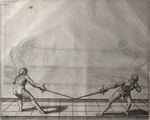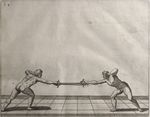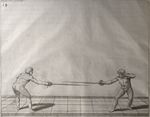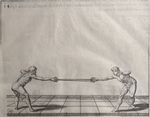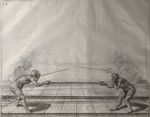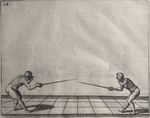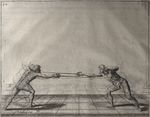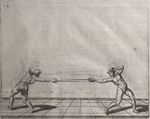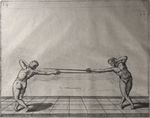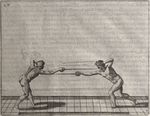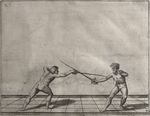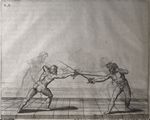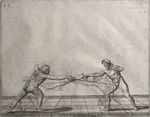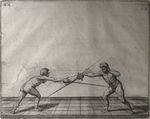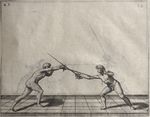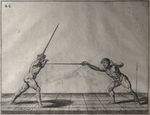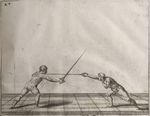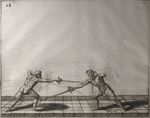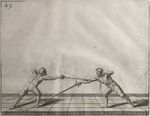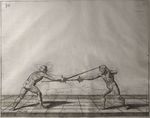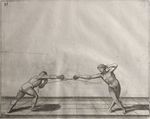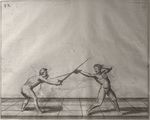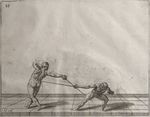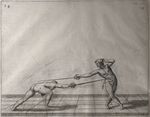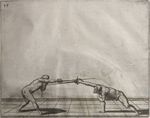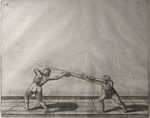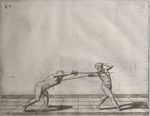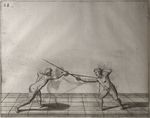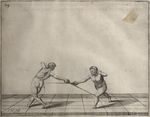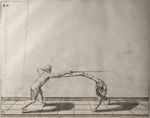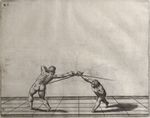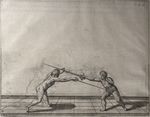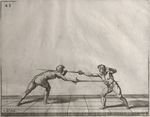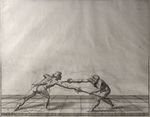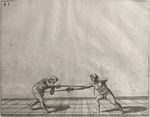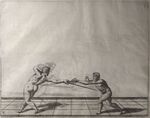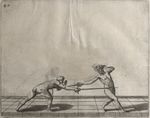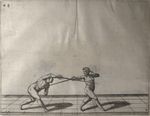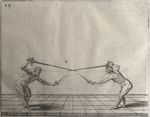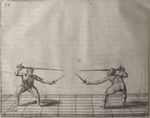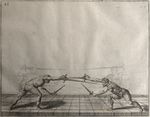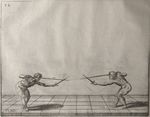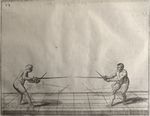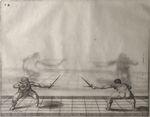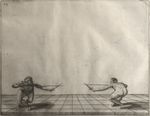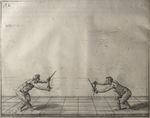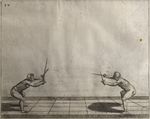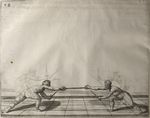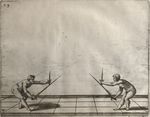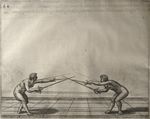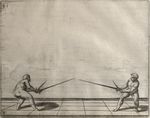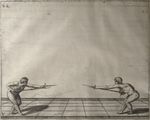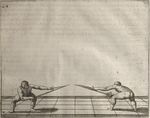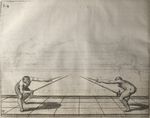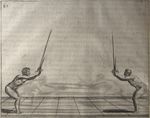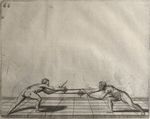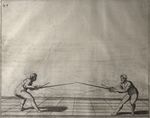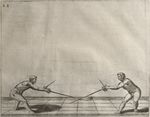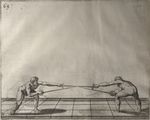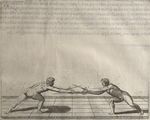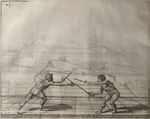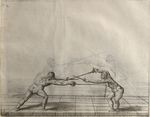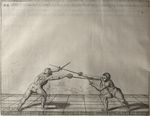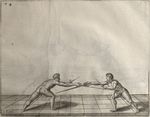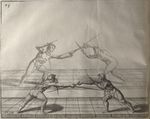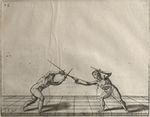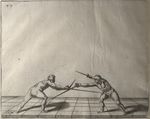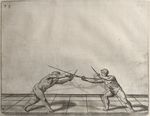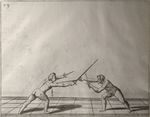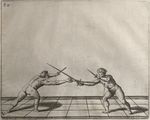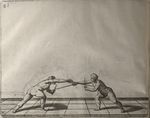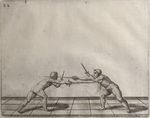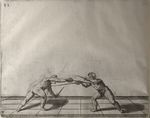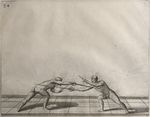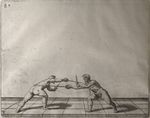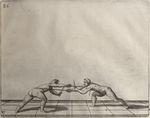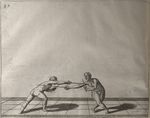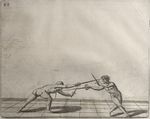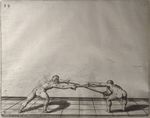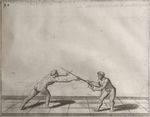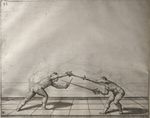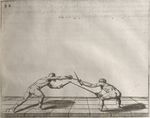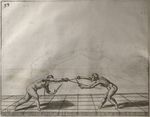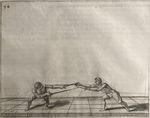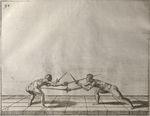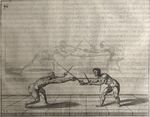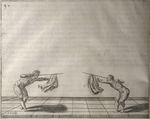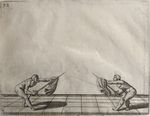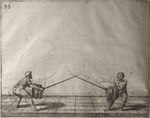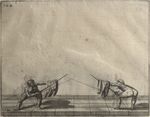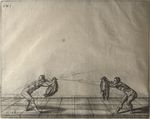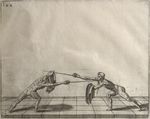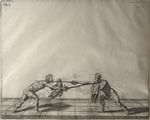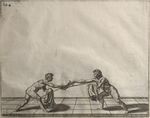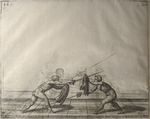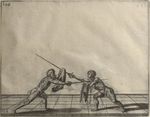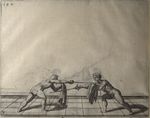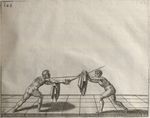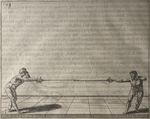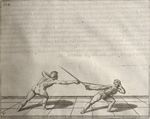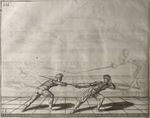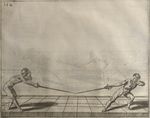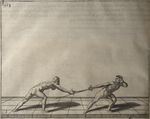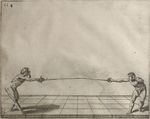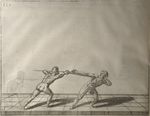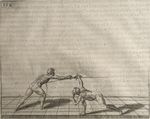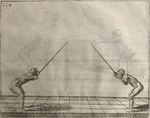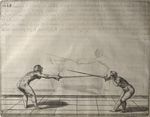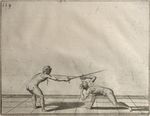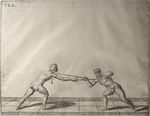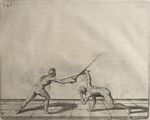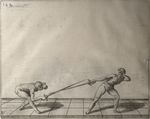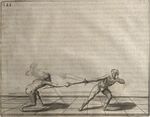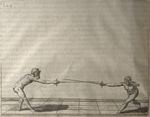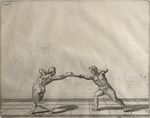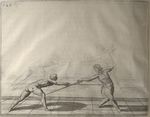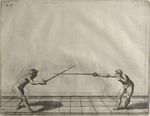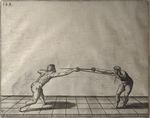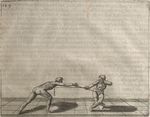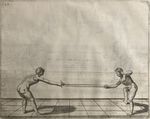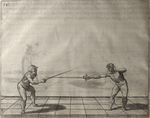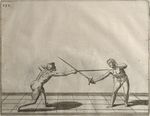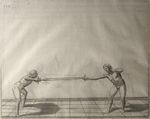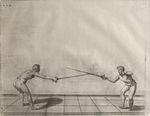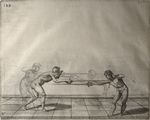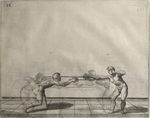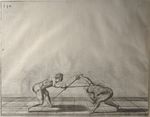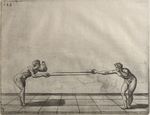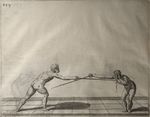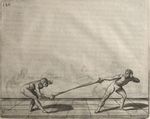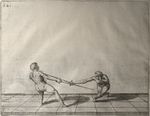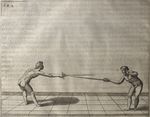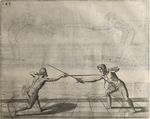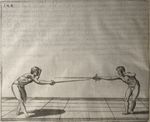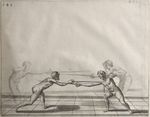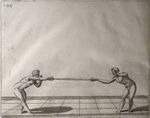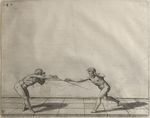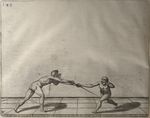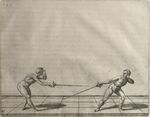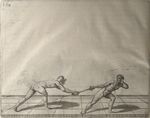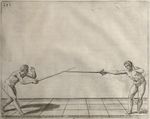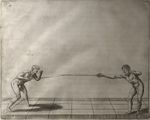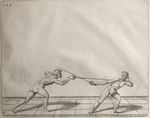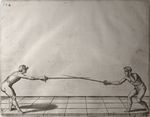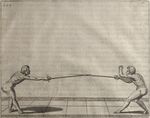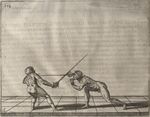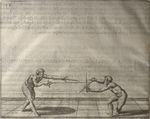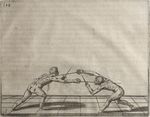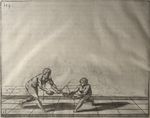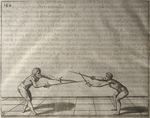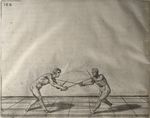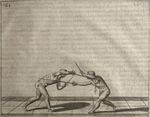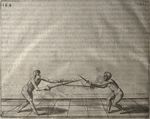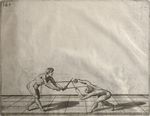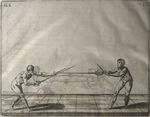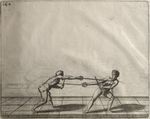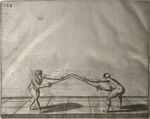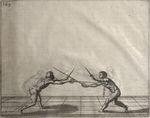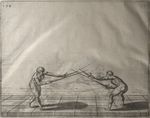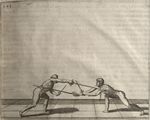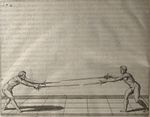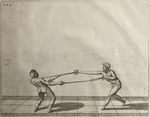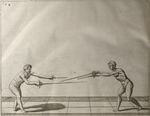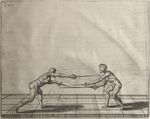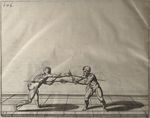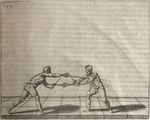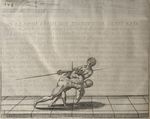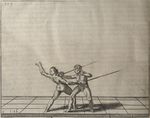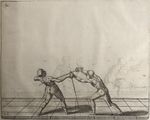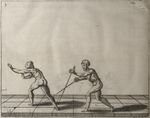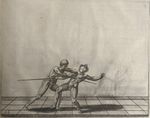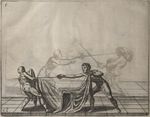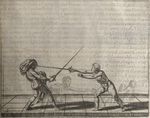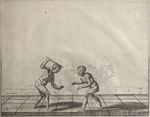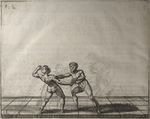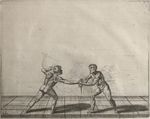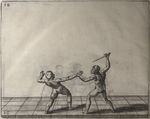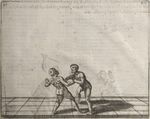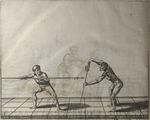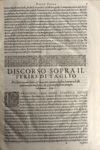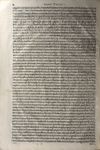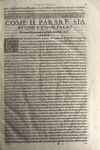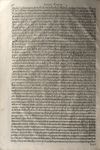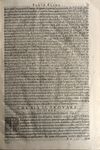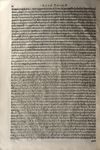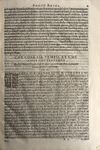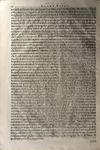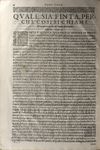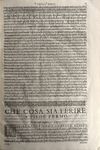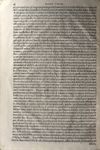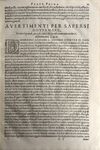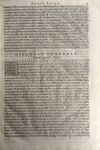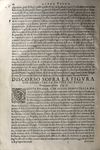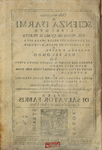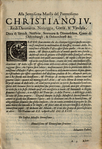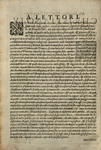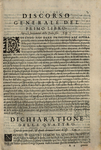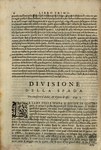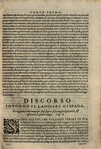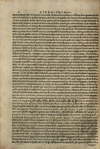|
|
You are not currently logged in. Are you accessing the unsecure (http) portal? Click here to switch to the secure portal. |
Difference between revisions of "Scienza d’Arme (Salvator Fabris)"
| (6 intermediate revisions by the same user not shown) | |||
| Line 42: | Line 42: | ||
| [http://soeg.kb.dk/permalink/45KBDK_KGL/143rgf3/alma99124187949705763 Digital scans] (1606) | | [http://soeg.kb.dk/permalink/45KBDK_KGL/143rgf3/alma99124187949705763 Digital scans] (1606) | ||
| [http://digitale-sammlungen.llb-detmold.de/content/titleinfo/9341317 Digital scans] (1606) | | [http://digitale-sammlungen.llb-detmold.de/content/titleinfo/9341317 Digital scans] (1606) | ||
| + | | [http://www.digitale-bibliothek-mv.de/viewer/image/PPN1823876773/1/LOG_0000/ Digital scans] (1606) | ||
| [http://anet.be/submit.phtml?UDses{{=}}132805157%3A293115&UDstate{{=}}1&UDmode{{=}}&UDaccess{{=}}&UDrou{{=}}%25Start:bopwexe&UDopac{{=}}opacehc&UDextra{{=}}nroclc%3Dlvd:902489370# Digital scans] (1606) | | [http://anet.be/submit.phtml?UDses{{=}}132805157%3A293115&UDstate{{=}}1&UDmode{{=}}&UDaccess{{=}}&UDrou{{=}}%25Start:bopwexe&UDopac{{=}}opacehc&UDextra{{=}}nroclc%3Dlvd:902489370# Digital scans] (1606) | ||
| [http://gallica.bnf.fr/ark:/12148/bpt6k1507286r Digital scans] (1606) | | [http://gallica.bnf.fr/ark:/12148/bpt6k1507286r Digital scans] (1606) | ||
| Line 68: | Line 69: | ||
| below = | | below = | ||
}} | }} | ||
| − | '''''De lo Schermo, overo Scienza d’Arme''''' ("On Defense, or the Science of Arms") or '''''Sienza e Pratica d’Arme''''' ("Science and Practice of Arms") is an [[nationality::Italian]] [[fencing manual]] written by [[Salvator Fabris]] in the 1590s and printed in 1606. It treats the use of the [[rapier]], both solo and in conjunction with the | + | '''''De lo Schermo, overo Scienza d’Arme''''' ("On Defense, or the Science of Arms") or '''''Sienza e Pratica d’Arme''''' ("Science and Practice of Arms") is an [[nationality::Italian]] [[fencing manual]] written by [[Salvator Fabris]] in the 1590s and printed in 1606. It treats the use of the [[rapier]], both solo and in conjunction with the [[dagger]] and the cloak; it also discusses unarmed defenses against the dagger. |
| + | |||
| + | Fabris's treatise is one of the most influential rapier manuals in history, reprinted many times and copied or expanded by numerous other authors for over a century after his death. | ||
== Publication History == | == Publication History == | ||
| − | ''Scienza d’Arme'' was first printed in Copenhagen, Denmark, in 1606 by [[Henrico Waltkirch]]. It was based on Fabris' earlier manuscript treatise ''[[Scientia e Prattica dell'Arme (GI.kgl.Saml.1868.4040)|Scientia e Prattica dell'Arme]]'' (GI.kgl.Saml.1868.4040); the text was rewritten in a more flowery style, and the artwork of the manuscript (which was drawn from life) was redrawn in an exaggerated, classical style. It included a title page and portraits engraved by [[Nicolaus Andrea of Flensburg]], heraldry and most illustrations by Christian Ⅳ's court artist [[Jan van Halbeeck]], and additional illustrations by [[Francesco Valesio]]. In 1624, unsold copies of the first edition were apparently acquired by Pietro-Paolo Tozzi in Fabris' native Padua, who | + | ''Scienza d’Arme'' was first printed in Copenhagen, Denmark, in 1606 by [[Henrico Waltkirch]]. It was based on Fabris' earlier manuscript treatise ''[[Scientia e Prattica dell'Arme (GI.kgl.Saml.1868.4040)|Scientia e Prattica dell'Arme]]'' (GI.kgl.Saml.1868.4040); the text was rewritten in a more flowery style, and the artwork of the manuscript (which was drawn from life) was redrawn in an exaggerated, classical style. It included a title page and portraits engraved by [[Nicolaus Andrea of Flensburg]], heraldry and most illustrations by Christian Ⅳ's court artist [[Jan van Halbeeck]], and additional illustrations by [[Francesco Valesio]]. At some point, probably during or immediately after the printing, a second title page was created with a much longer title (using the same decorative frame as the original but masking out and replacing the original text); this was added as a second title page to some copies and replaced the original title page in others (perhaps because some of the original title pages were damaged and unusable).<ref>Of 24 copies surveyed by [[Michael Chidester]], 14 had only the first title page, 3 had only the second title page, 6 had both title pages, and 1 had neither (instead, a second copy of page 151 was glued into the beginning of the book to serve as a title page and modified to refer to the first book).</ref> |
| + | |||
| + | In 1624, unsold copies of the first edition were apparently acquired by Pietro-Paolo Tozzi in Fabris' native Padua, who re-released them under the title ''Della vera pratica et scienza d’armi''.<ref>This is often described as a second edition.</ref> To ready them for sale, Tozzi replaced damaged pages from the first signature, including the title page, with new printed pages and also covered the publication information at the back of the book with a decorative paper patch. | ||
| − | The first translation of Fabris | + | The first translation of Fabris came in 1619, a German edition published in Leiden by Isack Elzevier under the title ''Des Kunstreichen Italiänische Fechtkunst'' ("The Illustrated Italian Art of Fencing"); this version also replaced the elaborate copperplate engravings of the original with rudimentary woodblock figures. This edition was reissued in Nuremberg in ca. 1650. Another German translation was produced in ca. 1635, but was never published and only survived in the [[Fechtkunst aus dem Italienischen (MS Dresd.C.94a)|MS Dresd.C.94a]]. |
In 1622, book II of Fabris' treatise received another German translation and its first French translation, which were published in Frankfurt by Jacob de Zeter. This the first multilingual and parallel text edition of Fabris' work. Zeter included this work as book II of his 1619 translations of [[Nicoletto Giganti]]'s 1606 treatise ''[[Scola, overo teatro (Nicoletto Giganti)|Scola, overo teatro]]'' ("School or Theater"), which he published in separate French and German editions titled ''Escrime Novvelle ov Theatre'' ("New Fencing or Theater") and ''Newe Fechtkunst Oder Schawplatz'' ("New Fencing Art or Show Place") respectively, both of which contained both translations of the text. This has oddly lead various fencing historians to accuse Giganti himself of plagiarism.<ref>This accusation was first made by [[Johann Joachim Hynitzsch]] (see below), who attributed the edition to Giganti rather than Zeter and was incensed that he gave no credit to Fabris.</ref> Unsold copies were sold as a new edition, including a new title page but merely covering the year 1622 on the title of Fabris' section with a slip of paper saying "1644". | In 1622, book II of Fabris' treatise received another German translation and its first French translation, which were published in Frankfurt by Jacob de Zeter. This the first multilingual and parallel text edition of Fabris' work. Zeter included this work as book II of his 1619 translations of [[Nicoletto Giganti]]'s 1606 treatise ''[[Scola, overo teatro (Nicoletto Giganti)|Scola, overo teatro]]'' ("School or Theater"), which he published in separate French and German editions titled ''Escrime Novvelle ov Theatre'' ("New Fencing or Theater") and ''Newe Fechtkunst Oder Schawplatz'' ("New Fencing Art or Show Place") respectively, both of which contained both translations of the text. This has oddly lead various fencing historians to accuse Giganti himself of plagiarism.<ref>This accusation was first made by [[Johann Joachim Hynitzsch]] (see below), who attributed the edition to Giganti rather than Zeter and was incensed that he gave no credit to Fabris.</ref> Unsold copies were sold as a new edition, including a new title page but merely covering the year 1622 on the title of Fabris' section with a slip of paper saying "1644". | ||
| − | In 1676, [[Johann Joachim Hynitzsch]] published an Italian-German parallel text in Leipzig titled ''Sienza e pratica | + | In 1676, [[Johann Joachim Hynitzsch]] published an Italian-German parallel text in Leipzig titled ''Sienza e pratica d'arme''. This edition included yet another German translation, either by Hynitzsch or possibly his teacher, [[Hans von und zum Felde]], as well as a preface in which he denigrated all prior German publications on Fabris (specifically mentioning the translations of Elzevier and Zeter and the derivative works of [[Hans Wilhelm Schöffer von Dietz|Hans Wilhelm Schöffer]] and [[Sebastian Heußler]]). There is evidence that this translation was circulated in multiple manuscripts prior to publication. Hynitzsch's edition was reprinted in Leipzig in 1713. |
| − | Fabris' treatise was translated into English by [[A. F. Johnson]] in the early 1900s; multiple typescripts were produced of the final draft, but it was not published until the [[HEMA Bookshelf]] edition of 2022. A second English translation was produced by Tom Leoni and published by [[Chivalry Bookshelf]] in 2005 under the title ''The Art of Dueling: Salvator Fabris' Rapier Fencing Treatise of 1606''; this was reprinted (without its introductory material) through a self-publishing service in 2016. In 2010, it was translated into Spanish by [[Eugenio Garcia-Salmones]] and published under the title ''La esgrima o la ciencia de las armas'' ("Fencing, or the Science of Arms"). | + | Fabris' treatise was translated into English by [[A. F. Johnson]] in the early 1900s and given the title ''Fencing or the Science of Arms''; multiple typescripts were produced of the final draft, but it was not published until the [[HEMA Bookshelf]] edition of 2022. A second English translation was produced by Tom Leoni and published by [[Chivalry Bookshelf]] in 2005 under the title ''The Art of Dueling: Salvator Fabris' Rapier Fencing Treatise of 1606''; this was reprinted (without its introductory material) through a self-publishing service in 2016. In 2010, it was translated into Spanish by [[Eugenio Garcia-Salmones]] and published under the title ''La esgrima o la ciencia de las armas'' ("Fencing, or the Science of Arms"). |
== Contents == | == Contents == | ||
| Line 351: | Line 356: | ||
<h3 style="clear: both;"> 1624 edition </h3> | <h3 style="clear: both;"> 1624 edition </h3> | ||
| − | + | This was not a true second edition, but rather a re-release of unsold copies of the first edition. The inner and outer sheets of the first signature (including the title page) were replaced, possibly due to damage to all remaining books. The replacement pages are included below. Additionally, the colophon on the final page was covered up with a decorative paper patch. | |
{{image|Fabris 1624 I Title.jpg|A1}} | {{image|Fabris 1624 I Title.jpg|A1}} | ||
| Line 407: | Line 412: | ||
| authors = [[transcriber::Alex Kiermayer]] | | authors = [[transcriber::Alex Kiermayer]] | ||
| source link = | | source link = | ||
| − | | source title= [[Index:Sienza e pratica | + | | source title= [[Index:Sienza e pratica d'arme (Johann Joachim Hynitzsch) 1677.pdf|Index:Sienza e pratica d'arme (Johann Joachim Hynitzsch)]] |
| license = copyrighted | | license = copyrighted | ||
}} | }} | ||
Latest revision as of 18:45, 10 April 2024
| Scienza d’Arme | |
|---|---|
| The Science of Arms | |
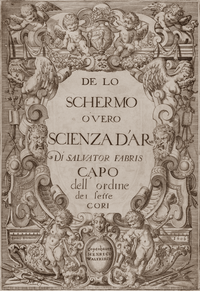 | |
| Author(s) | Salvator Fabris |
| Illustrated by | |
| Dedicated to | Christian Ⅳ of Denmark |
| Place of origin | Copenhagen |
| Language | Italian |
| Genre(s) | Fencing manual |
| Sources | GI.kgl.Saml.1868 4040 (1601) |
| Publisher | Henrico Waltkirch |
| Publication date | 1606, 1619, 1622, 1624, 1650, 1672, 1676, 1713 |
| First english edition |
Leoni, 2005 |
| Pages | 256 pages |
| Treatise scans |
|
De lo Schermo, overo Scienza d’Arme ("On Defense, or the Science of Arms") or Sienza e Pratica d’Arme ("Science and Practice of Arms") is an Italian fencing manual written by Salvator Fabris in the 1590s and printed in 1606. It treats the use of the rapier, both solo and in conjunction with the dagger and the cloak; it also discusses unarmed defenses against the dagger.
Fabris's treatise is one of the most influential rapier manuals in history, reprinted many times and copied or expanded by numerous other authors for over a century after his death.
Contents
Publication History
Scienza d’Arme was first printed in Copenhagen, Denmark, in 1606 by Henrico Waltkirch. It was based on Fabris' earlier manuscript treatise Scientia e Prattica dell'Arme (GI.kgl.Saml.1868.4040); the text was rewritten in a more flowery style, and the artwork of the manuscript (which was drawn from life) was redrawn in an exaggerated, classical style. It included a title page and portraits engraved by Nicolaus Andrea of Flensburg, heraldry and most illustrations by Christian Ⅳ's court artist Jan van Halbeeck, and additional illustrations by Francesco Valesio. At some point, probably during or immediately after the printing, a second title page was created with a much longer title (using the same decorative frame as the original but masking out and replacing the original text); this was added as a second title page to some copies and replaced the original title page in others (perhaps because some of the original title pages were damaged and unusable).[1]
In 1624, unsold copies of the first edition were apparently acquired by Pietro-Paolo Tozzi in Fabris' native Padua, who re-released them under the title Della vera pratica et scienza d’armi.[2] To ready them for sale, Tozzi replaced damaged pages from the first signature, including the title page, with new printed pages and also covered the publication information at the back of the book with a decorative paper patch.
The first translation of Fabris came in 1619, a German edition published in Leiden by Isack Elzevier under the title Des Kunstreichen Italiänische Fechtkunst ("The Illustrated Italian Art of Fencing"); this version also replaced the elaborate copperplate engravings of the original with rudimentary woodblock figures. This edition was reissued in Nuremberg in ca. 1650. Another German translation was produced in ca. 1635, but was never published and only survived in the MS Dresd.C.94a.
In 1622, book II of Fabris' treatise received another German translation and its first French translation, which were published in Frankfurt by Jacob de Zeter. This the first multilingual and parallel text edition of Fabris' work. Zeter included this work as book II of his 1619 translations of Nicoletto Giganti's 1606 treatise Scola, overo teatro ("School or Theater"), which he published in separate French and German editions titled Escrime Novvelle ov Theatre ("New Fencing or Theater") and Newe Fechtkunst Oder Schawplatz ("New Fencing Art or Show Place") respectively, both of which contained both translations of the text. This has oddly lead various fencing historians to accuse Giganti himself of plagiarism.[3] Unsold copies were sold as a new edition, including a new title page but merely covering the year 1622 on the title of Fabris' section with a slip of paper saying "1644".
In 1676, Johann Joachim Hynitzsch published an Italian-German parallel text in Leipzig titled Sienza e pratica d'arme. This edition included yet another German translation, either by Hynitzsch or possibly his teacher, Hans von und zum Felde, as well as a preface in which he denigrated all prior German publications on Fabris (specifically mentioning the translations of Elzevier and Zeter and the derivative works of Hans Wilhelm Schöffer and Sebastian Heußler). There is evidence that this translation was circulated in multiple manuscripts prior to publication. Hynitzsch's edition was reprinted in Leipzig in 1713.
Fabris' treatise was translated into English by A. F. Johnson in the early 1900s and given the title Fencing or the Science of Arms; multiple typescripts were produced of the final draft, but it was not published until the HEMA Bookshelf edition of 2022. A second English translation was produced by Tom Leoni and published by Chivalry Bookshelf in 2005 under the title The Art of Dueling: Salvator Fabris' Rapier Fencing Treatise of 1606; this was reprinted (without its introductory material) through a self-publishing service in 2016. In 2010, it was translated into Spanish by Eugenio Garcia-Salmones and published under the title La esgrima o la ciencia de las armas ("Fencing, or the Science of Arms").
Contents
| 1 - 76 | Book 1 part 1 - Rapier by Salvator Fabris |
|---|---|
| 76 - 133 | Book 1 part 2 - Rapier and dagger by Salvator Fabris |
| 134 - 149 | Book 1 part 3 - Rapier and cloak by Salvator Fabris |
| 151 - 218 | Book 2 part 1 - Rapier by Salvator Fabris |
| 218 - 242 | Book 2 part 2 - Rapier and dagger by Salvator Fabris |
| 243 - 256 | Book 2 part 3 - Grappling, dagger, and cloak |
Gallery
Title pages
Illustrations
Windsor variant
An apparently-unique copy of Fabris owned by a private collector in UK has the title page and dedication from the first dition, but the entire second signature and one sheet from the third signature were replaced for unknown reasons, apparently prior to the original binding; the type was reset for the replacement pages and the page breaks don't quite align with the original. These pages are included below.
1624 edition
This was not a true second edition, but rather a re-release of unsold copies of the first edition. The inner and outer sheets of the first signature (including the title page) were replaced, possibly due to damage to all remaining books. The replacement pages are included below. Additionally, the colophon on the final page was covered up with a decorative paper patch.
Additional Resources
The following is a list of publications containing scans, transcriptions, and translations relevant to this article, as well as published peer-reviewed research.
- None.
References
- ↑ Of 24 copies surveyed by Michael Chidester, 14 had only the first title page, 3 had only the second title page, 6 had both title pages, and 1 had neither (instead, a second copy of page 151 was glued into the beginning of the book to serve as a title page and modified to refer to the first book).
- ↑ This is often described as a second edition.
- ↑ This accusation was first made by Johann Joachim Hynitzsch (see below), who attributed the edition to Giganti rather than Zeter and was incensed that he gave no credit to Fabris.
Copyright and License Summary
For further information, including transcription and translation notes, see the discussion page.
| Work | Author(s) | Source | License |
|---|---|---|---|
| Images | Nicolaus Andrea of Flensburg, Jan van Halbeeck, Francesco Valesio | Guy Windsor | |
| Transcription (1606) | Michael Chidester | Index:Scienza d’Arme (Salvator Fabris) 1606 | |
| French Translation (1619) | Index:Escrime Novvelle ou Theatre (Salvator Fabris) Book 2 | ||
| German Translation (1677) | Alex Kiermayer | Index:Sienza e pratica d'arme (Johann Joachim Hynitzsch) |

